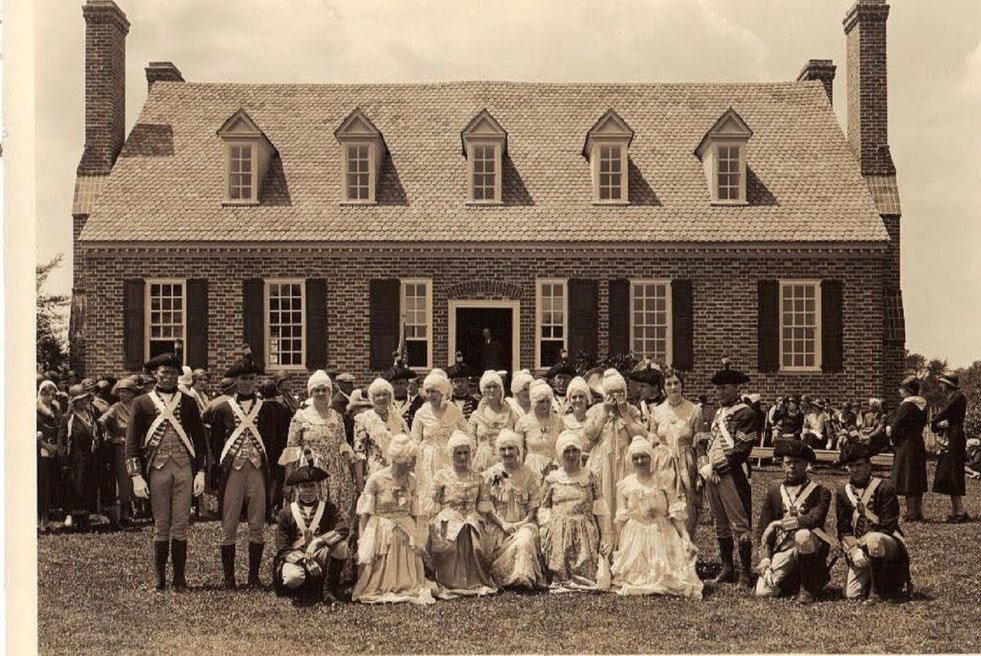Last updated: May 9, 2022
Article
The Founding of a Preservation Agency
When the Organic Act was signed on August 25, 1916, it created an agency responsible for managing and promoting the areas that had been set aside to protect their scenic, natural, and historic values for the enjoyment of future generations.
Over a century later, the National Park Service mission continues to reflect these founding ideals. Like anything that has been around for that long, the agency has changed and developed over time to become what we know it as today.
How did the NPS become a historic preservation agency?
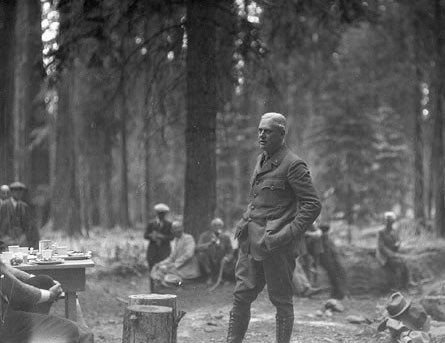
NPS Photo (Sequoia / Kings Canyon National Park)
Yellowstone National Park was established as the first national park in 1872, even before the creation of the National Park Service. Then, the Lacey Antiquities Act of June 8, 1906, which authorized the President to reserve or establish "national monuments containing sites and structures of historic or scientific value to the Nation," protected pre-contact sites and artifacts on public land at Mesa Verde National Park.
Meanwhile, other monuments and historical areas were managed by the War Department, the Forest Service of the Department of Agriculture, and the District of Columbia Office of Public Buildings and Grounds.
When the NPS was created in 1916, this new bureau was responsible for protecting the 35 national parks and monuments that were under management of the Department of the Interior at that time, as well as those yet to be established.
History of an Agency
When was each park unit created, and when did each became part of the National Park System?
Early Years
The early national parks, mostly designated on lands in the West, emphasized the protection of places with scenic grandeur, natural resources, and scientific values.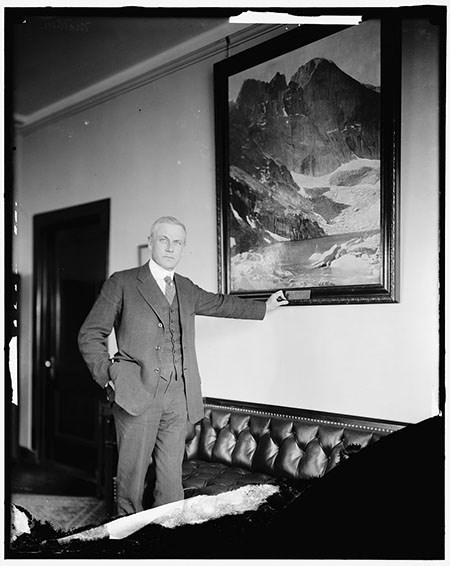
Harris & Ewing, photographer, [Between 1910 and 1920] Library of Congress.
The first two directors of the National Park Service, Stephen Mather (Director from May 1917 until January 1929) and Horace Albright (Director from January 1929 to August 1933) were experienced and ardent outdoor enthusiasts. Mather had summitted Mount Rainier with the Sierra Club in 1905.
In 1915, he organized a group of writers, officials, and conservationists as the Mather Mountain Party, sleeping in the shadow of California redwoods and riding horseback in the high Sierras while lobbying for support of a unified bureau. Mather also advocated for the protection of historic structures and places, and, after the NPS was created, both Mather and Albright continued to make the case for the agency's role in historic preservation.
Horace Albright describes how these interests in historic places and outdoor recreation shaped the period that followed his arrival to Washington, DC in 1913:
Twice we managed to get out to the battlefield of the first struggle at Bull Run, and to Baltimore to catch a glimpse of Fort McHenry. These travels were not easy in the days before automobiles and busses. A move of any distance had to be afoot or by streetcar, train, or boat on the Potomac. As every government employee worked all day Saturday, our trips had to be on Sundays or holidays, or short ones in the long summer evenings (Albright 1971).
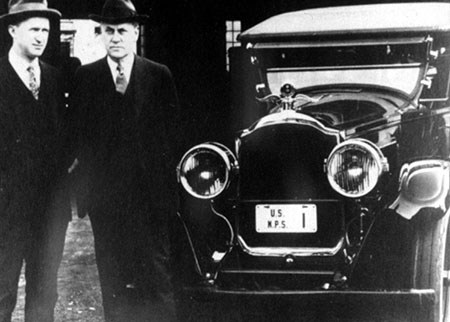
NPS Photo
During those early years, Albright and Mather toured battlefield sites and scenic highways, speaking with property owners, crowds, and presidents. In addition to recognizing the importance of identifying and protecting historic sites, Mather and Albright were interested in the visitors’ experience and understanding of those places.
In Albright’s Origins of National Park Service Administration of Historic Sites, he made note of the factors that enhance and define a visitor’s experience and which may be taken for granted in national parks today, such as signs, park guides, roads, and views.
When Albright and Mather visited Chickamauga and Chattanooga in 1915, then administered by the War Department, Albright remarked, “Since the park boundaries were not well marked, I was never sure when I was in the park, except where historic site markers had been installed. I met no park employees.”
Late in 1926, the pair toured the battlefield of Gettysburg. “We were astonished at the small acreage of these lands, not an acre of the first day’s battle being owned by the War Department. We were also unhappy about the quality of the guide service. We went on to Antietam, and were even more dumbfounded by the paucity of lands in Federal ownership.”
Preservation and the Public
Mather and Albright also recognized that public support of historic preservation could be stimulated by connecting with the recreational value of historic places. Scotts Bluff, a landmark on the Oregon Trail with a prominent butte rising high above the open Nebraska plains, was dedicated as a national monument in 1919 and expanded in 1924. In 1932, Albright approved building a road to the top of the bluff, starting a decade of building projects and Civilian Conservation Corps developments. Designed features were created to emphasize both the landscape’s historic and natural characteristics, attracting visitors to the site and helping generate support for its protection.
The George Washington Birthplace National Monument was created by legislation in 1930, two years before the bicentennial celebration of the birth of George Washington. This allowed for the expansion of the property, construction of the memorial house, and development of the landscape.
Meanwhile, Colonial National Historical Park was authorized in 1930, ahead of plans to celebrate the sesquicentennial of the Yorktown battle in October 1931. The events of the three-day celebration helped to encourage public enthusiasm and to firmly establish the agency’s role in historic preservation.
In the 1929, Department of the Interior Secretary Ray Wilbur proposed a reorganization plan, based on what was regarded to be the fundamental responsibilities of the Department. Albright and Mather argued that responsibility for historic sites and structures in other departments, such as the War Department, should be transferred to the National Park Service. The NPS had already gained some experience working in the field of historic preservation, and Albright presented a strong argument in support of the agency’s case. However, Great Depression and the end of the Hoover Administration caused the reorganization plan to stall.
Reorganizing
After years of persistence, dozens of visits to parks and historic places across the country, and one memorable road trip with President Franklin Delano Roosevelt, the historic preservation role of the NPS was officially recognized in 1933.
Executive Order 6166, signed on June 10, 1933 transferred national monuments and military sites from the Forest Service and the War Department to the National Park Service, making the National Park Service the Federal agency charged with the administration of historic and archeological sites and structures.
Preservation principles have also changed. For example, in the early NPS period at Shenandoah National Park, many residents were forced to relocate to make way for park development. This was an era before cultural resource stewardship practices were formalized, resulting in the inconsistent identification and management of historic structures, landscapes, and archeology. Park officials aimed to present a nostalgic view of the landscape character, “preserved” without the traces of recent settlement and use.
More recently, parks have been created and managed to allow residents to continue their traditional lifeways that are tied to land and place, such as at Canyon DeChelly National Monument and Ebey’s Landing National Historical Reserve. This can include places where the NPS doesn't own a portion of land in a park, or where special permits allow for residency, agriculture, or traditional cultural practices on park property.
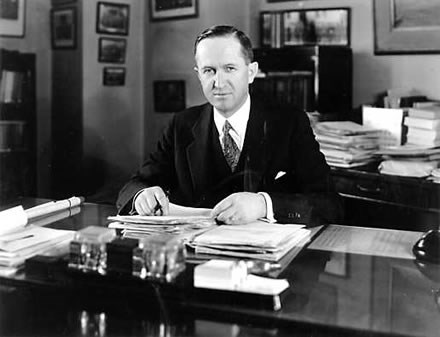
NPS Photo, Harpers Ferry Center
Horace Albright resigned after the Executive Order of 1933 was signed, believing he’d accomplished what he regarded to be his primary objective as Director of the National Park Service. The mission to preserve historic places continues to be one of the defining roles of the agency established by the Organic Act over 100 years ago.
But preservation is not a fixed target.
The Past into the Future
Since 1933, actions of the NPS reflect broader changes in preservation practice and theory. In addition to continuing to protect Yellowstone and those places that Mather and Albright explored, the NPS is also tasked with recognizing and protecting what has become historically significant since that time. This includes places associated with the Public Works Era, NPS Mission 66, and with the people, social movements, and historical events of World War II and the post-World War era.
Today, the NPS strives to preserve the history of all Americans, including many themes that could not be anticipated or were unrecognized at the founding of the agency. These include historic places associated with the struggle for Civil Rights and Social Justice. In 2021, the national park system has grown to include 423 units, of which two-thirds are set aside to preserve cultural heritage.
Sources and Further Reading
Albright, Horace M. Origins of the National Park Service Administration of Historic Sites. Eastern National Parks & Monument Association, 1971. https://www.nps.gov/parkhistory/online_books/albright/index.htmAlbright, Horace M., and Marian Albright Schenck. Creating the National Park Service: The Missing Years. University of Oklahoma Press, 1999. https://www.nps.gov/parkhistory/online_books/albright2/
National Park Service: The First 75 Years, edited by William H. Sontag, Eastern National Park & Monument Association, 1990. https://www.nps.gov/parkhistory/online_books/sontag/sontagt.htm.
Sellars, Richard West. Preserving Nature in the National Parks: A History. Yale University Press, 1997. https://www.nps.gov/parkhistory/online_books/sellars/index.htm.
"Quick History of the National Park Service." National Park Service, https://www.nps.gov/articles/quick-nps-history.htm.



